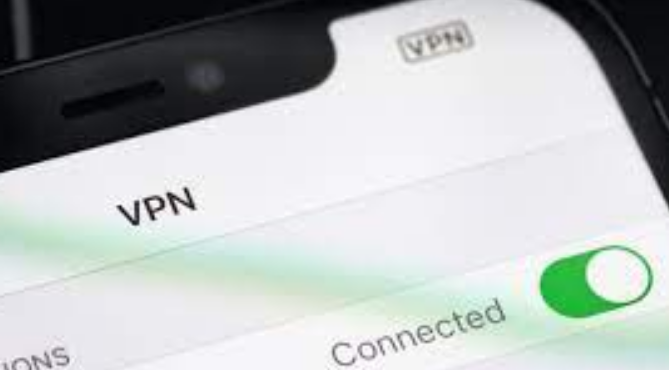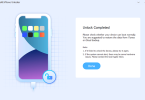 Virtual Private Networks (VPNs) have become essential for many iPhone users who seek to protect their online privacy and access geo-restricted content. In today’s digital world, using a VPN on iPhone has become increasingly important for ensuring online privacy, security, and unrestricted access to global content. However, VPNs can sometimes encounter issues that disrupt their functionality. This comprehensive guide will walk you through troubleshooting common VPN connection issues on your iPhone, ensuring a smooth and uninterrupted experience.
Virtual Private Networks (VPNs) have become essential for many iPhone users who seek to protect their online privacy and access geo-restricted content. In today’s digital world, using a VPN on iPhone has become increasingly important for ensuring online privacy, security, and unrestricted access to global content. However, VPNs can sometimes encounter issues that disrupt their functionality. This comprehensive guide will walk you through troubleshooting common VPN connection issues on your iPhone, ensuring a smooth and uninterrupted experience.
Contents
Checking Your Internet Connection
Verify Wi-Fi or Cellular Connection
Before diving into VPN-specific troubleshooting, it’s crucial to ensure that your iPhone has a stable internet connection. First, check if your Wi-Fi or cellular connection is working properly by opening a browser and visiting a website. If the website doesn’t load, the issue might be with your internet connection rather than the VPN.
Reset Network Settings
If your internet connection is unstable, try resetting your iPhone’s network settings. To do this, go to Settings > General > Reset > Reset Network Settings. This will erase all saved Wi-Fi networks, passwords, and VPN configurations, so be prepared to re-enter your credentials after the reset.
Examining VPN App Configuration
Verify VPN Server Address and Credentials
One of the most common causes of VPN connection issues is an incorrect server address or login credentials. Open your VPN app and double-check the server address and your username and password. If you’re unsure of the correct details, refer to your VPN service provider’s documentation or support resources.
Update to the Latest Version
Outdated VPN apps can sometimes cause connection problems. To ensure you use the most recent version, go to the App Store and check for updates. If an update is available, install it and restart your VPN app to see if the issue is resolved.
Switching VPN Protocols
Understanding VPN Protocols
VPNs use various protocols to create a secure tunnel between your iPhone and the VPN server. Some standard protocols include OpenVPN, IKEv2, and L2TP/IPsec. Different protocols may perform better on certain networks or devices, so it’s worth trying alternative options if you’re experiencing connection issues.
Changing the Protocol
To switch the VPN protocol, open your VPN app’s settings or preferences and look for the option to change the protocol. If you’re unsure which protocol to choose, consult your VPN provider’s documentation or support resources for recommendations. After selecting a new protocol, reconnect your VPN and test the connection.
Adjusting DNS Settings
Custom DNS Configuration
Some VPN connection issues can be resolved by changing your iPhone’s DNS settings. Custom DNS settings can help you bypass DNS-based restrictions and improve privacy. To modify your DNS settings, go to Settings > Wi-Fi > [Your Network] > Configure DNS > Manual. Add the recommended DNS servers provided by your VPN service.
Resetting DNS Settings
If you suspect that your custom DNS settings are causing connection issues, you can reset them to their default values. To do this, go to Settings > Wi-Fi > [Your Network] > Configure DNS > Automatic. This will revert to the default DNS servers provided by your internet service provider (ISP).
Also read: Is it worth it to go from a free VPN to a premium VPN?
Contacting Your VPN Provider
Reach Out to Support
If none of the above steps have resolved your VPN connection issues, it’s time to contact your VPN provider’s customer support. They can provide personalized assistance, as well as inform you of any server outages or ongoing maintenance.
Provide Detailed Information
To receive the most effective support, be prepared to provide detailed information about your issue. This includes your iPhone model, iOS version, VPN app version, and a description of the problem. Additionally, make note of any troubleshooting steps you’ve already attempted, as well as any error messages or unusual behavior you’ve observed. Providing this information will help the support team diagnose and resolve your issue more quickly.
Considering Alternative VPN Providers
Researching and Comparing VPN Services
If your VPN connection issues persist even after working with customer support, it may be time to consider switching to a different VPN provider. Research and compare various VPN services to find one that meets your needs and has a strong track record of reliable performance and customer support.
Taking Advantage of Free Trials and Money-Back Guarantees
Many VPN providers offer free trials or money-back guarantees, allowing you to test their service before committing long-term. Take advantage of these offers to assess a new provider’s performance, ease of use, and compatibility with your iPhone.
More from us: What Is a VPN? Your Personal Guide
Conclusion
Troubleshooting VPN connection issues on your iPhone can be a frustrating experience, but with this step-by-step guide, you’ll be better equipped to diagnose and resolve common problems. Remember to verify your internet connection, examine your VPN app configuration, switch VPN protocols, adjust DNS settings, and consult your VPN provider’s support team if needed. If all else fails, don’t hesitate to explore alternative VPN services to find one that offers a seamless and secure browsing experience on your iPhone.






